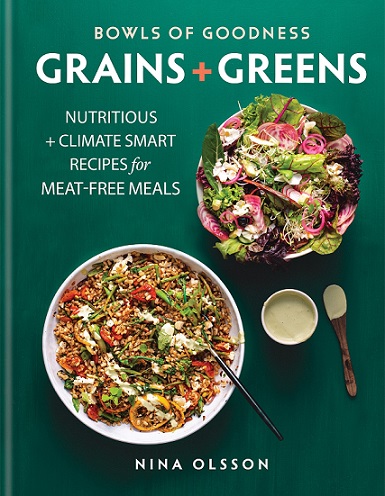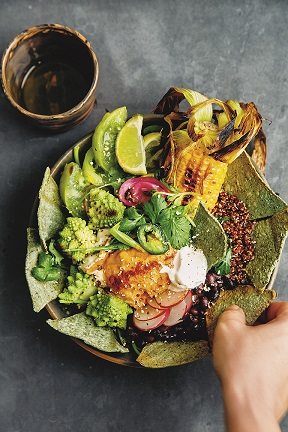Following the launch of her new cookbook, Grains + Greens, we speak with Nina Olsson (Nourish Atelier) about what it means to eat climate-smart food.
Cruelty Free Beauty
- 4 signs you have low iron levels
- Zero Waste Beauty: Adopt a green routine with these sustainable products
- This eco-friendly beauty box is packed with refillable multi-taskers
- “I find myself using it even when I don’t need to!”
- Arctic-inspired natural skincare brand launches in the UK
- Green People launches beauty balm packaged in 100% biodegradable pot
- Lush launches same-day delivery service for its iconic handmade cosmetics
- “This cruelty-free tanning water gave me the confidence boost I needed”
- rho launches sustainable loungewear that gives back
- Rose & Caramel Raises Awareness For Women’s Self-Esteem & Mental Health With ‘I TAN FOR ME’ Campaign
- Couple launches entirely plant-based and refillable deodorant on Kickstarter
- View all
Eco Living
- Simple Hacks to Cut Your Food Waste with Gino D’Acampo
- Five Easy Ways to Reduce Food Waste
- Eat these foods to boost your mood
- Upgrade Your Cheese Toastie
- Have a healthy Christmas with these festive food swaps
- Omega-3 Health Benefits
- 5 minutes with Max La Manna
- A nutritionist’s guide to eating for healthy joints
- Easy ways to achieve your health goals
- Discover the benefits of raisins on a vegetarian diet
- Improve your gut health with California Raisins
- View all
Vegan Recipes
- Quorn Vegan Hot & Spicy Burger with Pink Slaw
- Tomato and Pumpkin Soup
- Pea and elderflower cocktail
- Matcha Coconut Ice Cream
- Vegan Lemon Bars
- Mango Salad with Thai Dressing
- Garden Gimlet
- Tofu & Green Beans Teriyaki
- Cornflakes Bombay
- Rainbow Pickle
- Soba noodles with kale and collards
- View all
Popular recipes
- Spinach and ricotta quiche vegetarian recipe
- Cheats mushroom and spinach lasagne vegetarian recipe
- Lentil bolognese vegetarian recipe
- Creamy mushroom stroganoff vegetarian recipe
- Malaysian Rendang curry vegetarian recipe
- Feta, Butternut Squash, Caramelised Onion and Cashew Nut Wellingtons
News
- Nourish London collaborates with Freeset to create gifts that give back
- This vegan cheese range is now available in the UK
- How you can help with the Amazon wildfires
- Boost your veggie meals with this new umami sauce
- Green Cleaning Company Bio-D Signs Up To Plastic Pact
- New sustainable fashion brand launches vegan bags in the UK
- A catering company is now delivering vegetarian and vegan ingredients to your doorstep
- A quarter of Brits are now drinking plant-based milks
- NAILKIND Launches Natural Nail Colour Collection
- Greggs Offers Free Vegan Sausage Roll For Students!
- Cruelty-free beauty platform launches virtual skincare consultations
- View all
What is climate-friendly cooking?
Nina Olsson talks to us about reducing your impact through food

Why grains and greens?
Grains and greens make a really good foundation in a diet, and complement each other so well. They also add important fibre and nutrition to our meals, which is so important for our gut and digestive system – a key to a healthy body. Wholegrains are especially good for us: it’s been proven that eating them can extend our lives by up to a decade compared to diets that contain refined (processed) grains.
I hope that this book will inspire people to cook and buy more wholegrains. It would lead to a longer and happier life for many, possibly avoiding diabetes and other serious disease as a bonus, besides enjoying tasty and satisfying meals. My favourite dishes are all based on some combination of grains and greens: nasi goreng, tabouleh, risotto, kitchari, and colourful wholesome grain bowls.
The book is described as containing ‘climate smart’ recipes. What does this mean?
Each recipe in the book comes with suggestions and earth friendly notes on ways to cut waste or find easy, sustainable alternatives to ingredients. There are also notes on how to veganise each recipe, but most of the recipes in the book are naturally vegan already. Not all grains and greens are equal in terms of sustainability (though all still fares better than meat and fish farmed foods). Rice, for instance, when farmed in a traditional way, uses plenty of water and is therefore less sustainable. I also suggest using seasonal alternatives and organic ingredients where it matters the most.
Eating plant based, both vegetarian and vegan, is better for the planet. We can reduce up to 30 percent or more of our individual carbon footprints just by switching to a plant-based diet.
The majority of people can make the switch if the alternative to meat is satisfying and filling – that’s why wholegrains are important to integrate in meals. Fad grain-free diets are not sustainable in the long-run because people give up when they are not satiated. We need foods that are real and work for us – greens and grains will do the work!
At the beginning of your book, you say ‘Stop counting calories right now, if that’s what you’re doing, and start counting carbon footprints instead!’ – which is a wonderful sentiment. What do you think is the easiest way that people can reduce their impact on the environment through their food choices?
Besides eating plant based, it’s good to support small, sustainable businesses and shop from stores that stock organic and eco-conscious food – this will make a huge difference. Also by shopping in an eco-conscious store, you can relax and trust that the research is done for you, meaning they know the carbon footprint of the transport and farming for each product.
It’s also important to support eco-friendly efforts from larger supermarkets by buying from their vegan and organic sections. If we show through our joined consumer power that this is what we want, the industry will cater to us.
I also wish the general food industry, by law, would have a standard for labelling food where you could see how much energy it took to produce it, just like we have with nutritional labels. That would create more awareness and encourage us to be more mindful of our choices.
Image credit: Grains + Greens by Nina Olsson (Kyle Books, £18.99). Photography by Nina Olsson
We talk a lot about how wholegrain foods are much more nutritious, but that doesn’t mean we can’t enjoy a treat every now and then, right?! What’s your favourite dish to indulge in?
I have a soft spot for ice cream, especially if it’s a nut or chocolate version. During hot summer days, a visit to an ice cream parlour will be the highlight of the day.
I make my own black sesame ice cream, but I’ll happily have an Italian pistachio ice cream with my coffee on a sunny day! Anything Italian gets my pulse beating harder – pizza and pasta are favourites. I love truffle and mushroom pizzas and I feel no guilt at all having these occasional indulgences. It’s all about balance and the best thing about eating plenty of whole foods is you’ll have no guilt or worries when you do have those indulgences!
Many people would argue that plant-based eating is just a trend…
It’s growing stronger and it’s going to look very different in the next decade! The younger generations take climate change seriously, and they are also more concerned with the ethics of animal farming. I often say that meat eating will be a thing for museums and history books in the future. The trend ignited on social media with health influencers, and many have gone into it for the physical health aspects, but I see a stronger passion about the climate and food choices on social media: it’s less about your personal appearance and more about the planetary health. I see it as more of an awakening than a trend now.
With the ongoing coronavirus pandemic, we can still struggle to get our hands on certain ingredients. What are your store cupboard essentials that you rely on to cook a variety of meals?
Grains are of course perfect staples in the cupboard. I use varieties like brown rice, barley, oats and quinoa almost daily. I often flavour cooked grains with what I have at home: pesto for an Italian/risotto-style dish, or I’ll make an Asian stir-fry (goreng) with soy sauce, chilli paste and strips of pak choy or regular cabbage – cabbages last long in the fridge and add lots of flavour. Beans and lentils are also perfect staples to make stews with, just adding broth, and a tomato sauce or coconut milk base with spices will make an interesting stew. Onions are always good to add, and if you have spinach or sturdy cabbage like savoy or cavolo nero at home, use it in stews after a quick frying/wilting – it will add a deep and satisfying umami flavour to your meal. You can also experiment with different grain porridges and flavourings for breakfast: it’s both cheap and sustainable!

Grains + Greens by Nina Olsson is on sale now (Kyle Books, £18.99). Photography by Nina Olsson.
More from Vegetarian blog
_825_433_int.png)
Feeling down in the dumps? We asked chef and nutritionist, Olivier Sanchez, to share his top tips for foods that can boost our mood

Keen to add some vegan cheese to your diet but not sure where to start? Deputy Editor, Sophie Rae, puts the market’s leading brands to the test...
_825_433_int.jpg)
Spring has officially sprung and we have a beautiful issue for you jam-packed with Easter bakes, healing holidays and calming cuppas – enjoy!

Mum always knows best, so this year be sure to show her just how much you appreciate her. Here’s our pick of the best Mother’s Day treats for your ethically-conscious mum…

It's Fairtrade Fortnight and to celebrate we're shining a light on the most stylish and sustainable products on the market





